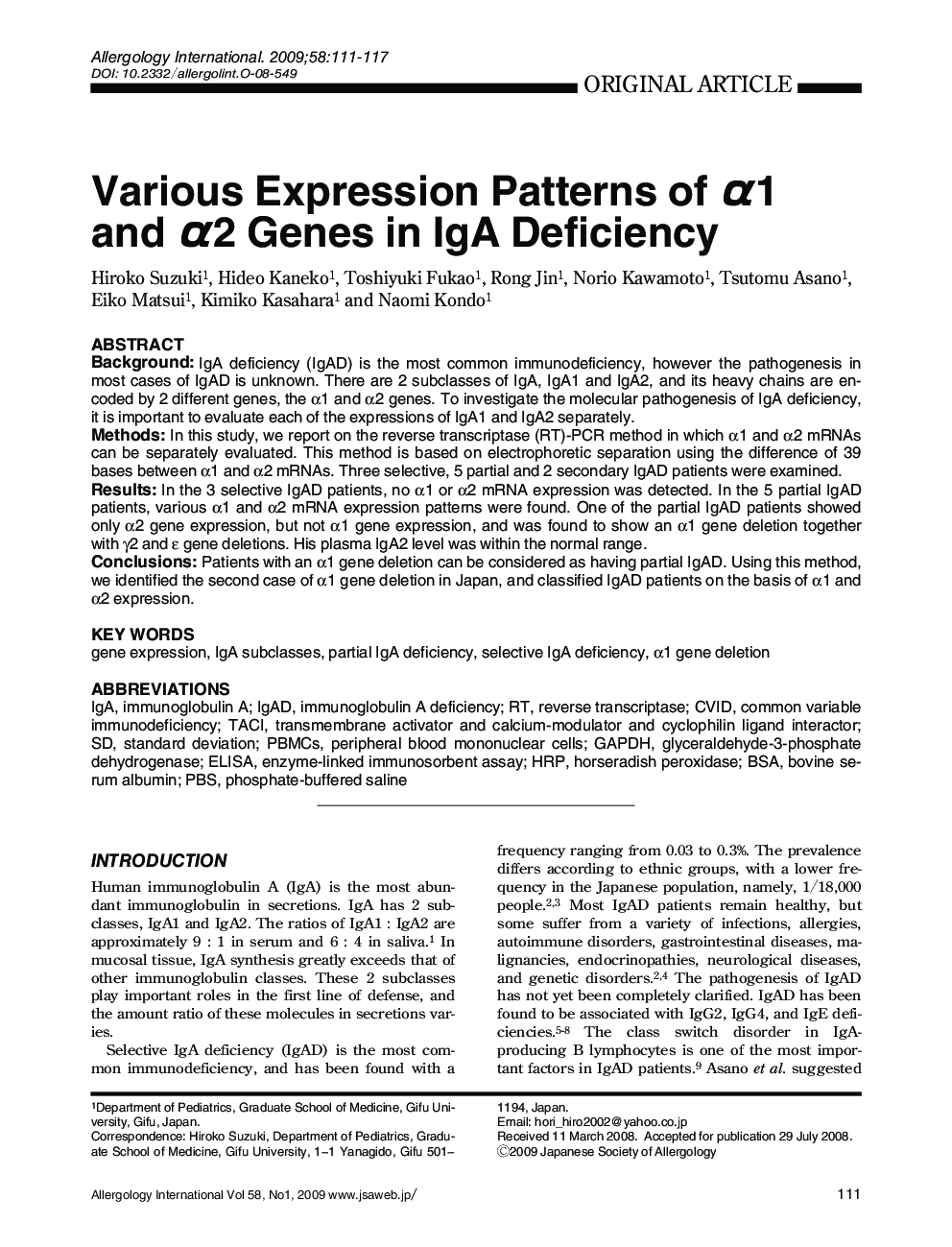| Article ID | Journal | Published Year | Pages | File Type |
|---|---|---|---|---|
| 3341185 | Allergology International | 2009 | 7 Pages |
ABSTRACTBackgroundIgA deficiency (IgAD) is the most common immunodeficiency, however the pathogenesis in most cases of IgAD is unknown. There are 2 subclasses of IgA, IgA1 and IgA2, and its heavy chains are encoded by 2 different genes, the α1 and α2 genes. To investigate the molecular pathogenesis of IgA deficiency, it is important to evaluate each of the expressions of IgA1 and IgA2 separately.MethodsIn this study, we report on the reverse transcriptase (RT)-PCR method in which α1 and α2 mRNAs can be separately evaluated. This method is based on electrophoretic separation using the difference of 39 bases between α1 and α2 mRNAs. Three selective, 5 partial and 2 secondary IgAD patients were examined.ResultsIn the 3 selective IgAD patients, no α1 or α2 mRNA expression was detected. In the 5 partial IgAD patients, various α1 and α2 mRNA expression patterns were found. One of the partial IgAD patients showed only α2 gene expression, but not α1 gene expression, and was found to show an α1 gene deletion together with γ2 and ε gene deletions. His plasma IgA2 level was within the normal range.ConclusionsPatients with an α1 gene deletion can be considered as having partial IgAD. Using this method, we identified the second case of α1 gene deletion in Japan, and classified IgAD patients on the basis of α1 and α2 expression.
